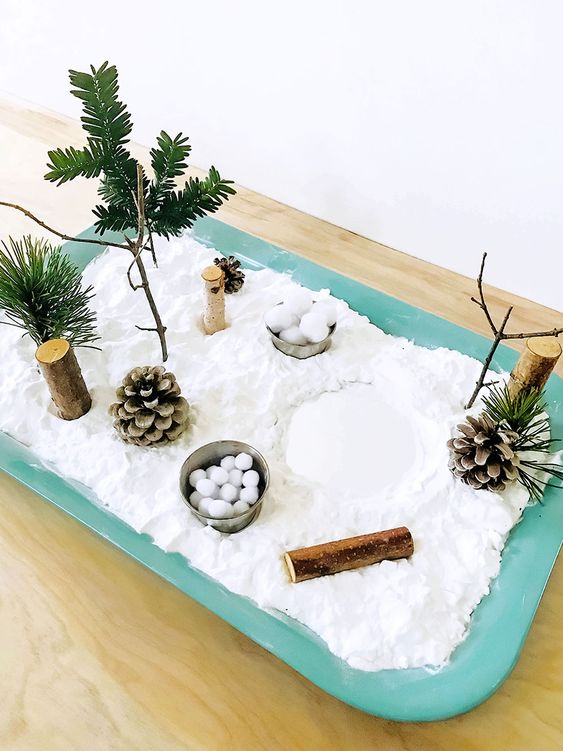Inspired by the Montessori pedagogythe sensory tank is an essential activity. It's ideal for stimulating your child's senses, fine motor skills and imagination. The sensory tray gives your child the role of explorer.
They can touch, feel and handle various objects. Visit sensory tank is an infinite source of discovery, which can be realized with a multitude of different themes and objects.
Where to put the sensory bin?
Preparing for the installation of this type of bin is essential. This is because.., some are messyIt is therefore advisable to install them in a playroom or outdoors, weather permitting. Another option is to use a tablecloth under the tray to facilitate cleaning.
The rules to follow for a good use of the sensory bin
To ensure that the activity runs smoothly, it is advisable to establish a few rules:
- Everything in the bin must stay there; it's forbidden to spill anything.
- Although the objects look appetizing, nothing should be ingested.
- Appropriate clothing should be worn for this activity.
- Wash hands before and after use.
- Cleaning must be carried out by two people.
Don't forget that the main objective is to fun and discovery.
But first, where to buy the sensory bin?
You can make them thanks to recovery elements or buy them directly.
A sensory bin purchased in a store or online

The Hoptoys toy brand offers three different models. The choice is vast, so you'll find pSeveral models at different prices. These bins are child-friendly and easy to use, offering a quick and efficient solution if you're short of time. There's something for everyone.
A homemade sensory bin
If you don't have much money, but a little time and energy, you've come to the right place. Nothing goes to waste; almost anything can be transformed into a sensory bin. Even if you're not very handy, you can do it.
Simply take a basin, an old box, a dustbin or a shoebox and turn it into a discovery bin. Adapt the theme of the bin to the container you've recycled.
What to fill the bin with?
A multitude of choices are available. The most important thing is that your sensory tray appeals to your child and that he can play in it without getting bored.



The basic element of the sensory bin
Generally, the bin is filled with sand or water. However, you can also use rice, pasta, oatmeal, ground coffee, dried beans or ice cubes.
The tools to be handled
To work on fine motor skills, it is recommended to add various tools such as a small spoon, measuring cup, pipette, funnel, tweezers, a bucket or small pots.
Small accessories
You can include pom-poms, feathers, corks, animal figurines, buttons, plastic fruit or vegetables, small wooden cubes or letters, and fabric scraps.
The elements of nature
Depending on the season, nature can offer you a multitude of options for creating limitless bins. Remember to write down your ideas for sensory bins in advance, so you can draw up a list of "nature" errands to run with your child: grass, dead leaves, flowers, wood, stones, pine cones or even shells.
2 ideas for sensory bins
Running out of ideas? Here are two types of sensory bins you can make with your child.
Cleaning the farm animals



Source : Pinterest
In this case, you'll need not one, but two bins.
In the first bin: mix water with cocoa powder to give the impression that the animal figurines are dirty.
The resulting texture is close to that of mud.
In the second tank Prepare a mixture of soapy water and add a brush.
This will provide everything needed to make the animals as clean as a whistle. The child will develop fine motor skills thanks to this sensory activity, and this will enable him to acquire responsibilities in an indirect way that will promote his autonomy.
A sensory tray to write well


Source : Pinterest
This activity couldn't be simpler. All you need is a tub and colored rice, marbles and a stick. Place a number of marbles in the tray and ask your child to write the corresponding number on the stick.
This activity will enable your child tolearning to count and writeYou can replace the rice with sand, flour or coffee, and the marbles with various small accessories that the child can count.
This idea can also be adapted for work on alphabet letters or geometric shapes to reproduce with a finger, stick or brush.


